Resident Evil Village, or RE8 as it’s colloquially known, is the latest major installment in the long-running Resident Evil series. It would be a disservice to say that games simply belong to the survival horror genre since they essentially created it. The series has spanned two and a half decades and has graced nearly every major gaming platform.
Now, the latest major entry in the series is coming to iOS. Resident Evil Village for iOS is largely a port of the Mac version, which in turn was a port of the PC version. It’s a native ARM version of the game, as you’d expect it to be for iOS, and is only available on the Apple A17 Pro on iPhone and M1 or newer on iPad.
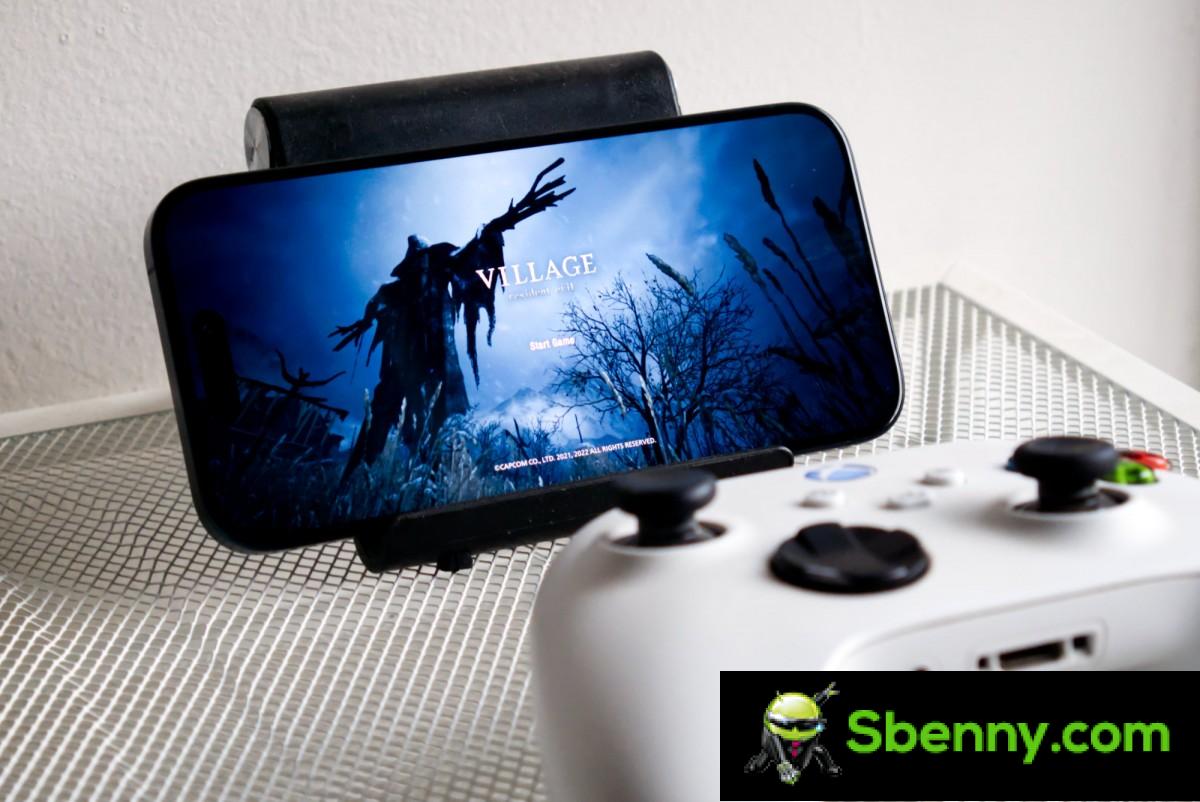
Today I want to watch the game on an iPhone. This is not necessarily a detailed review of the game, which is now two years old and has a known number, but rather the experience of playing it on an iPhone, more precisely on the new iPhone 15 Pro. So let’s get started.
Resident Evil Village follows the story of Ethan Winters, a returning protagonist from Resident Evil 7. After the harrowing events of the previous game, Ethan is trying to settle down with his family and have some semblance of a normal life when things go wrong again . Taken to an unknown abandoned village, Ethan must try to once again save his family from the horrors found there.
Without revealing the plot of this game and the previous one, this is as much of a summary as possible. Resident Evil plots are a bit silly, to say the least, and this one is no different, with an eclectic cast of characters that are equal parts charming and terrifying. While some knowledge of the series is helpful, you can essentially delve straight into this one and the prologue at the beginning should be enough to get you up to speed. This means you don’t need to have played the previous games to appreciate it.

Resident Evil Village on iOS is available as a free download, which gives you access to the Village’s prologue and opening chapter. Once you reach Dimitrescu Castle, the game asks you to purchase the full version, which is simply an IAP that costs $16 and unlocks the rest of the game. There’s also a DLC pack for $10, which gives you access to the Trauma Pack and the Winter expansion. The former mainly adds cosmetics and a higher difficulty level, while the latter adds a third-person mode, additional characters for the Mercenaries mode, and the Shadows of Rose story mission. There’s also a $2 all-access coupon, which unlocks all locked items in the game and essentially acts as a paid cheat code.
The prices mentioned above are temporary discounts and will increase starting November 20th.
As previously mentioned, the iOS port of the game is more or less just the macOS version with seemingly very few changes. This can mainly be seen in the settings and menu of the game.
Jump into the menu and you’ll first notice how small everything is. I’m not exaggerating when I say that this is basically the macOS version, as the developers simply forgot that the average iPhone doesn’t have a 13+ inch display and so you may need to make the menu text bigger. On the iPhone 15 Pro, my eyesight was definitely put to the test, and those with poor vision may have more difficulty.
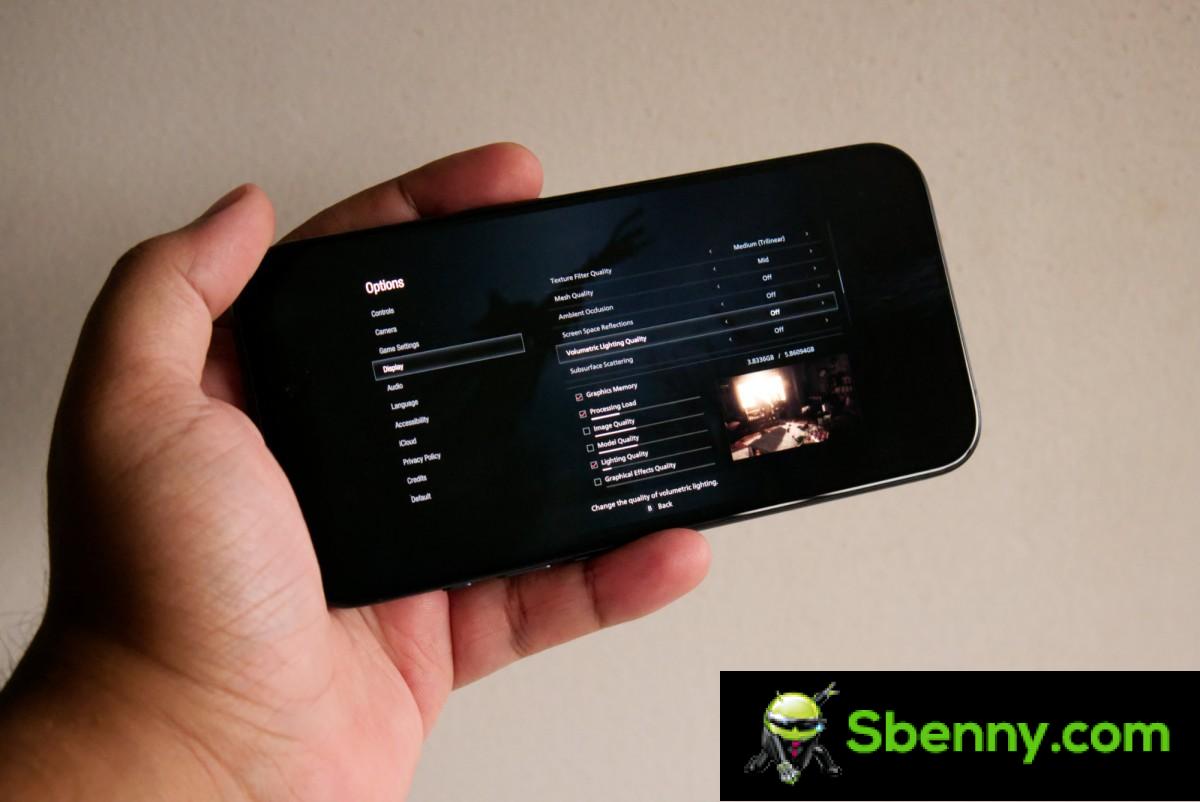
The other thing you’ll notice is that the graphical menu is identical to the macOS version. Now, I’m primarily a PC gamer and the graphics menu is one of my favorite places in a game, but there’s something wrong with seeing it on a phone.
On the one hand, you have access to essentially all the options available on PC minus ray tracing and VRS. Additionally, AMD FSR 1.0 has been replaced with Apple’s MetalFX (more on that later). But other than that, you have all the same options, including resolution, frame rate, rendering mode, resolution scaling, anti-aliasing, texture resolution, and caching. There’s also texture filtering, polygon mesh quality, ambient occlusion, screen-space reflections, volumetric lighting quality, subsurface diffusion, shadow quality, contact shadows, caching shadow, bloom, lens flare, film noise, depth of field, lens distortion and AMD. FidelityFX adaptive contrast sharpness. Some of these options such as rendering mode, resolution scaling, CAS and AA are disabled when MetalFX options are enabled.
If you’re not sure what all of these do, the game also has some quality presets, including a recommended mode, which turns off most of these options.
The reason I’m not particularly thrilled to see these options in a mobile game is because they add complexity where it shouldn’t. A mobile version of a game should be released in an optimized state, where various parameters are already chosen during development to offer the best image quality/performance ratio. Some presets would make sense if the game launched on Android where there is no limit to hardware variation, but they would make little sense considering it will only be available on a handful of iOS devices, all of which are very easy to optimize. This is not a good sign because to me it signals a low effort port.

I’ll talk more about performance and image quality later, but first I need to get the controls out of the way. Resident Evil Village for iOS features on-screen controls. Again, these controls are not designed for mobile devices as the game itself is not. Instead, your screen is filled with every single button you’d normally find on a physical controller because you actually need all of them to play the game.
You can adjust the position of the keys on the screen. You can also adjust the opacity and how long it takes for controls to automatically hide when you’re not using them. You can save changes across multiple presets and easily swap them via a button at the top right.
Playing Resident Evil Village with the iPhone’s on-screen controls is simply not a great experience. A first-person shooter is already a poor experience with a physical controller compared to a keyboard and mouse. Playing on a touchscreen with a facsimile of the physical controller layout is orders of magnitude worse.
There wasn’t a layout that I felt really comfortable with and the sheer number of keys on the screen also hindered not only the action on the screen but the other keys as well. It didn’t take me long to upgrade to a Bluetooth controller and never look back. You have to remember that the game was designed with physical controls in mind, and that the on-screen action doesn’t slow down to make you slowly fiddle with the touch controls. You just end up making mistakes and getting frustrated. The on-screen controls are simply a backup option and not at all how you should play if you can avoid it.
However, using a wireless controller seems to result in noticeable input lag. I used an Xbox wireless controller paired via Bluetooth, and the controls had a much longer delay than the on-screen buttons, which were quite responsive. The game feels a little floaty with a wireless controller, which is a shame and my attempts to connect the Xbox controller via a USB cable were in vain because even though the iPhone has a USB-C connector now the Xbox controller doesn’t seem no longer work. be supported by a cable. You may have better luck with a different controller. Mouse and keyboard are also not supported.
Coming back to image quality, this is where Resident Evil Village on iOS scores very well. For all its flaws, a simple port of the Mac version and then the PC version essentially means you’re getting high-end visuals without ray tracing. Village, in general, is a very beautiful game with excellent graphics, high geometric detail, beautifully lit (and unlit) environments, superb character models, and great materials. Even when set to minimum, the game still looks fantastic.


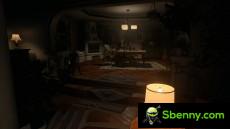

iOS Minimum Settings • iOS Max Settings • PC Max Settings • PC Max with Ray Tracing
What’s not great is the performance, at least on the iPhone 15 Pro. The launch version of the game had long stutters and pauses, which often led to the game completely freezing or the home screen freezing. The issue was partially fixed with a patch, but ended up delaying this review as the game had a tendency to freeze at a specific point early in the game, preventing further progress.
Unfortunately, performance isn’t much better now. Even at the lowest setting and MetalFX set to performance mode, Village runs at or below 30 fps most of the time. A stable 30fps is quite playable, especially for a largely slow game like this, but unfortunately the frame rate here isn’t stable. Certain points during the traversal will especially trigger long periods of sustained drops in performance, which slowly resolve over a few seconds. The performance also seems to cause problems with the audio, which is often out of sync with the images on the screen.
Since the performance is the same as the iPhone 15 Pro, it doesn’t make much sense to make a guide to optimized settings. The best thing you can do is set everything to the lowest values, except perhaps texture settings and anisotropic filtering, which can be increased slightly as they don’t affect GPU performance, then enable MetalFX performance mode with the resolution set to the display . native. The good thing is that you can get away with a lot on the iPhone’s smaller screen, except reducing the output resolution, which makes the game noticeably blurry, so I’d keep it native. I also wouldn’t bother setting higher settings since it’s hard to see any noticeable differences on the iPhone’s display.
If I had to guess, it’s possible that the game performance issues on iPhone stem from memory management. Resident Evil Village is particularly demanding in terms of video memory and wasn’t particularly pleasant to run on PCs with less than 8GB graphics VRAM without lowering textures too much. The iPhone 15 Pro only has 8GB of memory for anything and the memory is likely to be overloaded and turn into storage space, which would explain why the game slows down particularly when approaching new areas. Running the game will also cause background apps to close and switching to some of them will also cause the game to quit, so there are definitely issues with respect to memory management here.
It seems like the game is a little too ambitious for the A17 Pro and the iPhone 15 Pro’s memory situation, especially in its released state. It’s rather a shame that Capcom decided to phone this in instead of wasting time optimizing the two iPhone models with the A17 Pro, and it seems like you need at least an M1 or newer to properly enjoy the title on an Apple platform.
However, there are brilliant moments where the frame rate isn’t that bad and the game looks absolutely stunning. Despite my complaints, it was hard not to be impressed to see a game previously only available on consoles and PC playable on a smartphone. The fact that this is a slow port makes it particularly impressive, and that the A17 Pro can run it is commendable.
Running a demanding game at what would undoubtedly be the maximum TDP means you’ll end up with a lot of heat. Unfortunately, the iPhone heats up during gaming, which can cause further performance degradation. I would recommend keeping the phone out of the case and playing with a wireless controller so the phone can dissipate the heat and you won’t feel any of it.
I was impressed with the use of Apple’s new MetalFX upscaler. MetalFX offers two modes, performance and quality, which offer simple spatial or temporal upscaling respectively. Similar to AMD’s FSR 1 and FSR 2, MetalFX can upscale a low-resolution rendered image to a higher-resolution output image using information within a single (spatial) frame or using multiple previous (time) frames.



Native • MetalFX Quality • MetalFX Performance
Performance mode seems pretty rough on the Mac and perhaps larger-screen iPads, but was quite useful on the smaller screen of the iPhone 15 Pro. The image has noticeable flickering in high-frequency detail areas, but it’s not too much bothersome. The quality preset cleans up the image considerably and actually looks better than the native one as it can resolve much finer detail than the game’s lackluster native TAA implementation. It has more smudges than TAA or preset performance, but it’s not really noticeable on the phone’s screen. There is also the cost of performance, which is often not justifiable.
Save file loading times weren’t particularly fast but they were far from slow. They load slower than a PC despite the phone using fairly fast flash memory, but the limiting factors here are probably the CPU and memory.
Another thing that impressed me is that the developer has included true HDR support. I’ve never tried any HDR gaming on a phone, but the implementation here is great. Resident Evil Village already looks amazing, but the way the lights from the torches and lamps stand out makes it even more stunning to look at. At one point I was almost blinded when I decided to shoot up close with an explosive barrel. The iPhone 15 Pro’s display is clearly doing a lot of heavy lifting, and visually the whole experience is a real pleasure.
The sound in the game is also fantastic. Resident Evil Village makes good use of positional audio, and the mobile version sounds clean without any aggressive compression to fit on a phone. And speaking of compression, the game requires an additional 8GB download on top of the 1.37GB download from the App Store, so it’s not that big at all.
The game supports backing up and restoring save files to iCloud. However, saves are only compatible between iOS devices, and you can’t restore a save from your Mac to continue where you left off.
Overall, Resident Evil Village on iOS is a mixed bag. Sometimes the mere existence of something can be impressive and that is certainly the case here. This is, once again, a largely unmodified version of the Mac and PC port, and seeing it work on an iPhone is incredibly impressive.
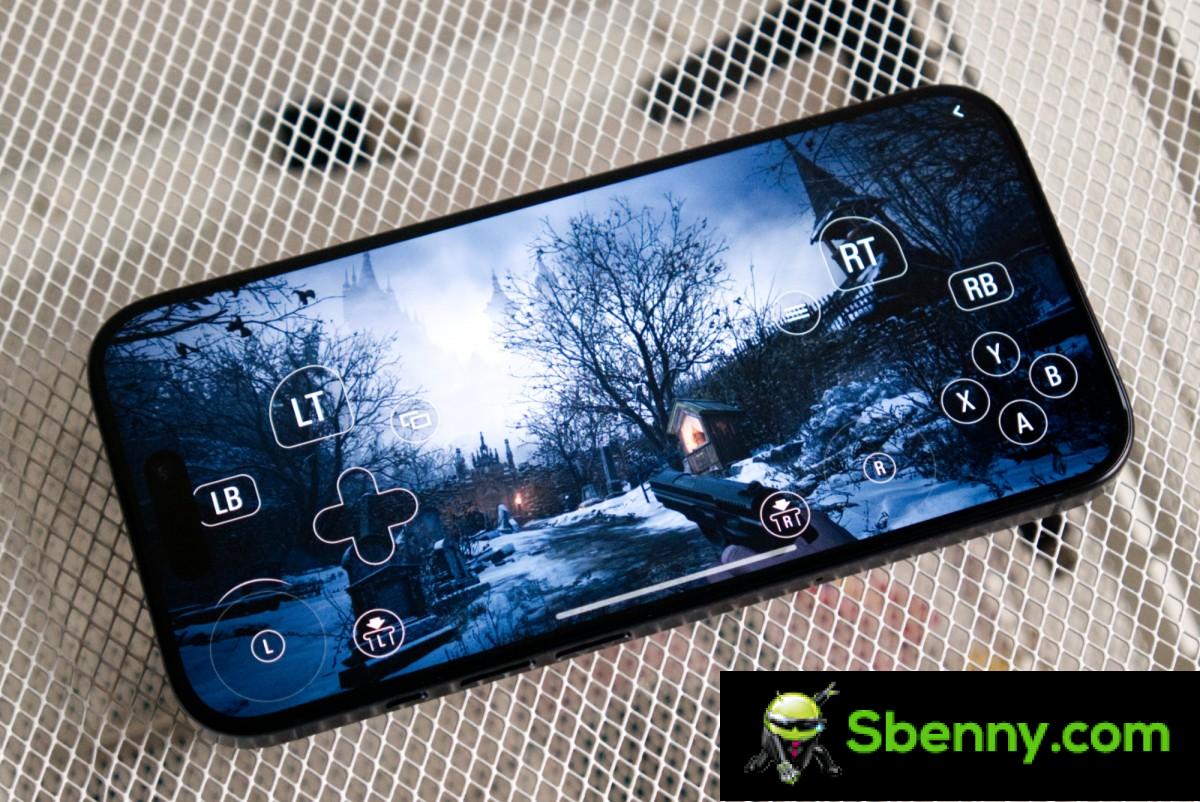
However, there was work to be done to make this something that’s merely playable into something that’s actually fun, and Capcom didn’t put that in. Performance on the A17 Pro is poor, the on-screen controls are a bit weak. literal afterthought and no attention was paid to making the UI readable for adult human eyes.
I assume the experience would be better on an iPad in terms of performance and usability, but that doesn’t justify the fact that minimal effort was put into making this port, as evidenced by the overly complex graphical menu for a mobile title. A mobile port should have the same level of optimization as the console versions, not the desktop versions.
What’s disappointing is that the iPhone 15 Pro’s hardware is clearly capable of providing a better experience if the developer had worked a bit on optimizing the device, similar to what you see for the much weaker Nintendo Switch. I’m surprised Apple is even marketing this game in its current state as I’d say it needs a lot of work to become a flagship iPhone title.
Ultimately, Resident Evil Village for iOS is a title that is currently best suited for iPads and perhaps future iPhones, and unless Capcom decides to go back and commit further, it is not recommended for purchase on the company’s iPhones. current generation.





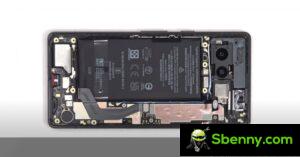

Start a new Thread